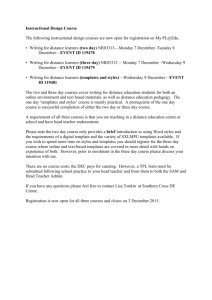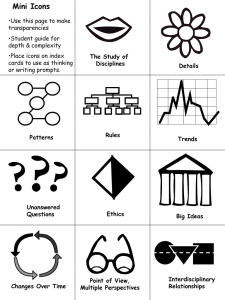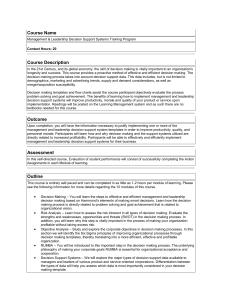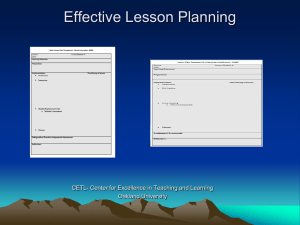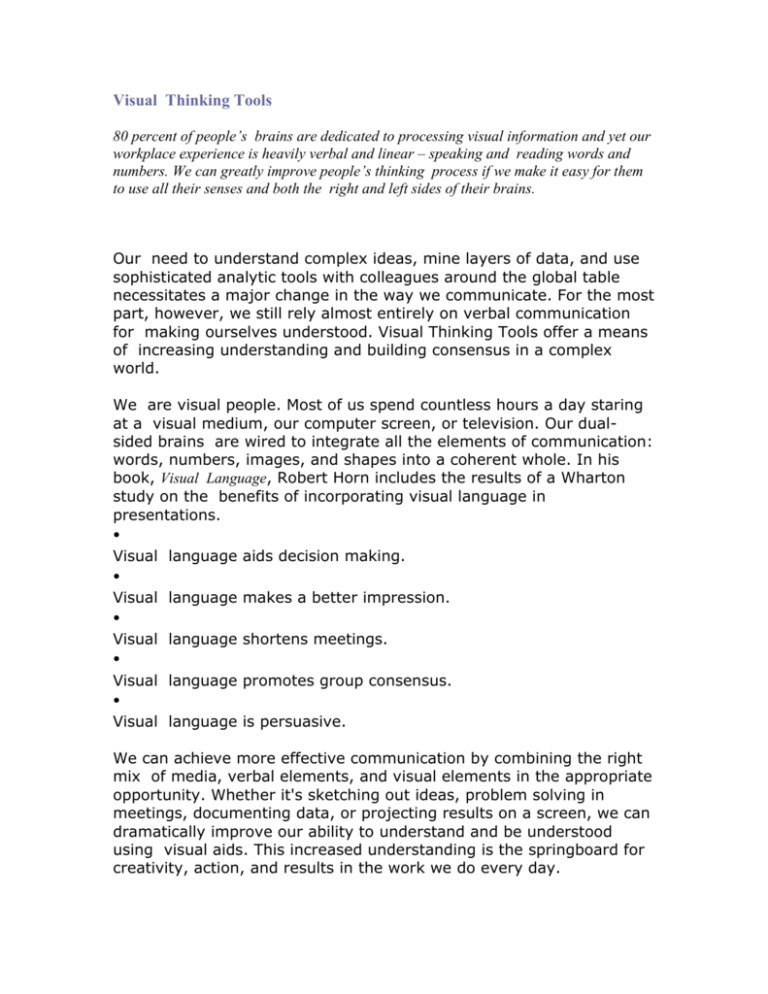
Visual Thinking Tools
80 percent of people’s brains are dedicated to processing visual information and yet our
workplace experience is heavily verbal and linear – speaking and reading words and
numbers. We can greatly improve people’s thinking process if we make it easy for them
to use all their senses and both the right and left sides of their brains.
Our need to understand complex ideas, mine layers of data, and use
sophisticated analytic tools with colleagues around the global table
necessitates a major change in the way we communicate. For the most
part, however, we still rely almost entirely on verbal communication
for making ourselves understood. Visual Thinking Tools offer a means
of increasing understanding and building consensus in a complex
world.
We are visual people. Most of us spend countless hours a day staring
at a visual medium, our computer screen, or television. Our dualsided brains are wired to integrate all the elements of communication:
words, numbers, images, and shapes into a coherent whole. In his
book, Visual Language, Robert Horn includes the results of a Wharton
study on the benefits of incorporating visual language in
presentations.
•
Visual language aids decision making.
•
Visual language makes a better impression.
•
Visual language shortens meetings.
•
Visual language promotes group consensus.
•
Visual language is persuasive.
We can achieve more effective communication by combining the right
mix of media, verbal elements, and visual elements in the appropriate
opportunity. Whether it's sketching out ideas, problem solving in
meetings, documenting data, or projecting results on a screen, we can
dramatically improve our ability to understand and be understood
using visual aids. This increased understanding is the springboard for
creativity, action, and results in the work we do every day.
Anyone can incorporate Visual Thinking tools into their work. The
following scenarios describe a brief selection of Visual Thinking tools
you can start using right away.
Paul was excited about his new assignment. Over the years, he had become a bit of a
broken record about the problems with new product teams being slow, unimaginative,
and frustrating. If the company was going to stay alive and thrive through the next 50
years, he was convinced that the fundamentals of product development had to change
and big time. When the company recently acquired a new technology, Paul’s boss gave
him the chance he had been asking for.
As a member of an industry sector panel, Paul had previously experienced the power
that Visual Thinking tools brought to their work. So simple and so intuitive, and yet so
powerful, this way of working had turned around what had been a pretty challenging
situation. Conversations typically strayed off topic and meetings went too long
producing too little. Nobody seemed to listen to each other and making a decision was a
nightmare. Finally, a facilitator came in and quickly taught them the use of a few simple,
but effective, techniques. Paul knew exactly how he wanted to start up his new team and
used this approach from the start.
Visual Thinking tools used in this situation
Basic Visual Thinking tools
Write information on a white board or sheets of flip chart paper on
the wall as the meeting progresses. By keeping it visible throughout,
it becomes a public record, and participants can correct it and add to
it in real time.
The Parking Lot –to “park” those ideas the group agrees to discuss
later.
Benefit: Stay on the agenda without losing important topics.
The Action Steps – to record decisions, agreements, or next steps that
group members commit to.
Benefit: Clearer agreements, increased accountability, and greater
ownership for results.
The Blank Slate – to encourage participants to sketch out their ideas
and proposals.
Benefit: Greater participation for both verbal and non-verbal
participants and greater understanding for all.
Create a “group memory.”
The biggest inhibitor to a productive, focused, creative, efficient
conversation is the group’s dependence on the attention and memory
span of each individual. Writing down the group members’ key
thoughts on a white board, computer screen, or big piece of paper
gives the group a “memory.” Thus, all the information is accessible
even as the conversation is unfolding. Latecomers have the
opportunity to catch up, and everyone’s contribution is
acknowledged. Leaders enter the team room and are impressed at
how productive the group has been because they can literally see the
conversation.
The leaders at Goodwill Industries International were planning a series of events to
celebrate their organization’s centenary in 2002. As part of their approach, they decided
to talk to major stakeholders in 13 cities across the country to understand how the
system was working since welfare reform legislation passed five years ago. The goal was
to invite a wide cross-section of participants to dialogue about a complex and
controversial topic. How could they achieve their desired result within a four-hour
meeting?
With the assistance of a facilitator, they refined the agenda and developed several large
displays to help people quickly orient to the big picture of Goodwill’s planning process
and the specific tasks they would be asked to complete at their tables. Goodwill
leadership used the large map to tell the story of their project. Participants quickly
gained an understanding of where they fit in the process. An electronic version was
posted on the Goodwill Web site.
Visual Thinking tools used in this situation
Charts and Large Displays
Charts and large displays are created to:
•
Tell the story of the team’s or the organization’s history (see 75
Years of Management Ideas & Practice: 1922-1997, Harvard
Business Review Reprint 97500). Mergers and acquisitions are
excellent opportunities to utilize this tool.
•
Share the company vision of its desired future.
•
Show a complex process or model, as in the Goodwill example.
Materials can be either prepared ahead or in real time as part of a
group process.
Benefits:
•
Individuals can quickly understand a large amount of complex
information.
•
Colorful graphic displays inspire, delight, educate, and stimulate the
viewers.
•
Creating the display helps people appreciate their shared history or
future vision.
Geoff Ball (a major contributor to the field of graphic facilitation) described his
experience in a master plan development process for the redesign of San Francisco
International Airport. Noise and traffic issues were the subject of conflict between the
airport and its neighbors. At one point in the process, the planners created a list using
“plannerese” jargon of 36 different mitigations. For the public workshop, however, they
converted the “plannerese” into 36 icons and placed them on a neighborhood map.
During this meeting they used the icons to explain the mitigations and facilitate
discussion about them. They found that people stored a great deal of information
“under” the graphic icons, that the graphics triggered memories of what the planners
had said about the mitigations. As a result, participants did not get hung up on the
technical terms and were able to use icons to indicate their priorities and make
suggestions for other mitigations.
Visual Thinking tools used in this situation
Templates
This form of Visual Thinking tool is much like a game board. Once
everyone understands the concept -- a model of an airport, for
example -- a group can get to work. Templates have long been used in
the workplace but rarely are they made large enough that everyone
can participate as a group. Any topic or process can be converted to a
template.
Hints:
•
Send templates out in advance to stimulate thinking and to allow
participants to prepare for the workshop.
•
Use icons or metaphors to pull out the deeper meaning. For
example, images that describe what airport noise looks and feels
like or how is an airport like my neighborhood?
•
Use table-sized templates for small group work instead of flip charts.
•
Use Post-it® Notes to move information around to different categories
on a template.
Benefits:
•
Templates provide an explicit structure for thinking together.
•
The group is more analytical because all of the data is available all
the time, rather than slides whizzing by.
•
Multiple perspectives can be displayed and linked.
•
The complexity of the problem or vision is illuminated rather than
ignored.
•
Colorful templates are memorable. The brain retains the images for
long periods of time.
•
Group members participate because visual medium stimulates the
imagination and holds their attention.
•
Groups can work faster if a task has been structured in advance and
displayed in template form.
Summary
Visual Thinking tools are finding greater acceptance than ever before.
Charting Your Company’s Future by W. Chan Kim and Renee
Mauborgne was featured on the cover of the June 2002 Harvard
Business Review describing “The Art of Strategy.” “Most strategic
planning involves preparing dense documents filled with numbers and
jargon. But building the process around a picture yields much better
results.” The next time you encounter a complex communication
problem, try applying some of the Visual Thinking tools discussed
here to help your group work together more effectively.
About the Author
Joan McIntosh coaches individuals and teams to become the architects
of their future and the designers of their dreams. She is an expert in
the design and use of graphic tools and processes to support her
consulting and coaching clients worldwide. She has taught graphic
facilitation and strategic visioning workshops for The Grove
Consultants International since 1990.
If you have a suggestion to improve ACUMEN, an idea for a topic, or
you are having problems unsubscribing, email Becky Tonn.
The Management Center - College of Business
University of St. Thomas
Mail #TMH 166
1000 LaSalle Avenue
Minneapolis, MN 55403-2005
Ready to serve you weekdays from 7:30 a.m. to 4:30 p.m.
651-962-4600 or 1-800-328-6819 ext.2-4600
Fax: 651-962-4610
mgmt_center@stthomas.edu
© 2000 - 2003. All Rights Reserved.


